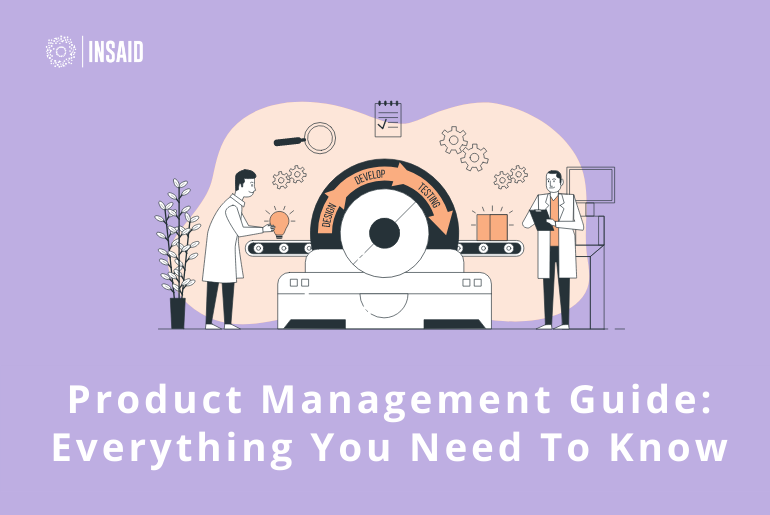If you look around you will notice that you’re surrounded by products catering to your day-to-day needs. Your phone, smartwatch, recliner chair, AI-driven air conditioner, Uber, Facebook, and the list goes on. But do you ever wonder what goes behind materializing an idea to create such amazing products? The answer is – Product Management.
So exactly what is Product Management? And who is a Product Manager?
Ever since the infamous 1931 “Brand Men” memo by P&G employee Neil H. McElroy, the word Product Manager has caught everyone’s eye. But not many quite understand what Product Management is.
In this comprehensive Product Management Guide, we share with you everything you will ever need to know about Product Management. So, If you are an existing Product Manager or someone looking to become one, this guide will answer all your Product Management related questions. In this article we cover:
- What is Product Management?
- What does a Product Manager do?
- Types of Product Management roles
- Product Management career path
- How to become a Product Manager?
 Pin
PinLet’s get started.
What is Product Management?
Product Management is an interdisciplinary field focused on solving customer pain points at a large scale using strategy, design, engineering, customer interaction, and communication.
To put it simply, Product Management involves managing everything about a product from its inception to launch to post-launch to create great products that are loved by people.
What Does a Product Manager Do?
A Product Manager works cross-functionally with users, stakeholders, engineering, design, and marketing teams to ensure that a good product is developed and delivered.
A Product Manager is the voice of the customer.
In a day, a Product Manager works like the CEO of a product. The key day-to-day activities of a Product Manager include working on product strategy, market research, customer interviews, competitor analysis, product development, testing, branding and promotion, sales, and analytics.
These are broadly the job responsibilities of every Product Manager. However, as one moves up the ladder, more decision-making responsibilities are included in the job description. Further, the responsibility of a Product Manager also varies according to the company, type of industry, and product.
Types of Product Management Roles
To build a career in Product Management, it is important to understand, assess, and identify which type of Product Manager you are. Depending on your profile, skill set, experience, and interests you need to identify the perfect Product Management role.
According to PM books, there are five major types of Product Management roles. These include:
- Product Manager
- Technical Product Manager
- Product Marketing Manager
- Growth Product Manager
- Data/analytics Product Manager
In addition to these companies hire Product Managers for specific roles too such as Customer Product Managers. Each of these roles is specialized and requires specific skills and knowledge. But at the same time, these are subsets of a general Product Manager role.
The following vein diagram depicts where every Product Manager fits in the process of product development.
 For aspiring product Managers, it must be understood that Product Management is not limited to any one field say tech or design. To become a Product Manager or a specialized Product Manager it goes without saying, that having a basic knowledge of technology, business, analytics, design, and marketing is necessary.
For aspiring product Managers, it must be understood that Product Management is not limited to any one field say tech or design. To become a Product Manager or a specialized Product Manager it goes without saying, that having a basic knowledge of technology, business, analytics, design, and marketing is necessary.
Product Management Career Path
Before stepping into any field, it is crucial to understand how your career will progress in the coming years. Today, hiring in Product Management roles is at a record high. From FAANG companies to consumer durable brands to top startups such as Uber, all are hiring talented Product Managers to lead their product growth.
From entry-level positions to Product leader roles, Product Managers are everywhere. Take a look at how the career path of a Product Manager looks like.

How to become a Product Manager?
Check out the four-step approach to becoming a world-class Product Manager.
Step 1: Learning Product Management Basics
The first step to becoming a world-class Product Manager is to master the 5 pillars of Product Management. These 5 pillars include the basic knowledge every Product Manager needs to have to develop successful products.
5 Pillars of Product Management
- Product Strategy
- Product Engineering
- Product Design
- Product Launch
- Product Analytics
To begin your preparation, you can refer to Product Management books and other such resources. However, for a more structured and focused learning path one should go for a Product Management certification. In a PM course, you get the opportunity to be mentored by industry-best Product Managers and renowned academicians.
Step 2: Master Product Management Tools
The second step is learning and practicing Product Management tools. With multiple teams and responsibilities to handle, Product Managers rely on tools to make their lives easier. To be an efficient Product Manager, one must master these tools. Some of the popular PM tools include Pendo, Trello, Jira, ProductPlan, Figma, and Confluence.
Step 3: Networking
The third step for transitioning to a Product Manager role is networking. Like any other field, networking in Product Management is crucial. Connect and talk to Product Managers, industry experts and get insights to strengthen your Product Management skills. Networking is also a great way to stay updated with the latest Product Management trends.
Step 4: Getting Ready
A very important and often overlooked fourth step is getting ready to crack PM roles. This includes preparing a data-driven Product Management resume and a product portfolio. A product portfolio should showcase your work in any form such as a website or a blog. Having a product portfolio would help you find the right Product Management role quickly and more effectively.
Bottomline
LinkedIn ranked Product Management as one of the most promising jobs of 2019, with a career advancement score of 8/10. According to Wall Street, 7% of Harvard Business Graduates took jobs in Product Management. So what does this mean?
This means that if you want to move to a Product Management role, there is no better time than now.
The average salary offered to Product Managers is much higher than what’s offered to a fresh engineer or business graduate. The demand for Product Managers is high and a significant skill gap exists right now. It’s the perfect time to invest yourself into becoming a Product Manager.
We hope you found this article useful. If you are an aspiring Product Manager, check out our Global Certificate in Product Management program that will prepare you to crack PM roles in just 6 months.






